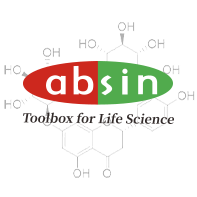Product Details
Product Details
Product Specification
| Operating Instructions | Animal and plant tissues, serum (plasma), cells, bacteria, cell supernatant, fruit juice, honey, urine and other samples | |||||||||||||||||||||||||||||||||||
| Usage |
Self-supplied consumables: Sample preparation: Experimental steps:
Note: In order to compare the hydroxyl radical scavenging ability of different samples, the same batch of samples must be diluted in the same way, and the extract or drug must be prepared in the same concentration. The results were calculated as follows: The calculation formula was: hydroxyl radical clearance D%=(ΔA standard -ΔA measured)÷ΔA standard ×100% |
|||||||||||||||||||||||||||||||||||
| Theory | The hydroxyl radical ·OH is the neutral form of the hydroxide ion (OH-) and is highly reactive (easily turning into a hydroxyl group). Hydroxyl radicals act on biological molecules such as proteins, nucleic acids and lipids in the body, causing damage to the structure and function of cells, and then leading to metabolic disorders and diseases. Hydroxyl radical scavenging ability is one of the important indicators of samples of antioxidant capacity, in the study of antioxidant supplements and medicines widely used. Hydroxyl radical scavenging capacity detection kit (trace method) can detect plant and animal tissues, serum (plasma), cells, bacteria, qing, fruit juice, honey, urine samples such as hydroxyl radical scavenging ability, its principle is H2O2 / Fe2 + by Fenton reaction to generate hydroxyl free radicals, Salicylic acid can effectively capture the hydroxyl free radicals reaction with non-ferrous material 2, 3 - dihydroxy benzoic acid, has maximum absorption peak at 520 nm, after joining material with clear ability, non-ferrous material will be reduced, thus can according to the absorbance value of value judgment sample to remove hydroxyl free radical ability. | |||||||||||||||||||||||||||||||||||
| Synonym | Micro Hydroxyl Free Radical Scavenging Capacity Assay Kit | |||||||||||||||||||||||||||||||||||
| Composition |
|
|||||||||||||||||||||||||||||||||||
| Background | Hydroxyl radicals, OH is hydroxyl ions (OH -) form of neutral, with high reactivity (easily become hydroxyl). Hydroxyl radicals act on biological molecules such as proteins, nucleic acids, and lipids in the body, causing damage to cell structure and function, and then leading to metabolic disorders and diseases. Hydroxyl free radical scavenging capacity is one of the important indexes of the antioxidant capacity of samples, which is widely used in the research of antioxidant health products and drugs. | |||||||||||||||||||||||||||||||||||
| General Notes | 1, different batch number, the composition between different manufacturers don't mix; Otherwise, it may lead to abnormal results. 2, when mixing or redissolving the components, avoid air bubbles. 3, frequently change the suction head to avoid cross contamination between the components. 4, before the experiment, ensure that all the components and equipment are at the right temperature. 5. Keep the samples and all reagents on ice during the assay to avoid denaturation and inactivation. 6, the OD value exceeds 1.3, the sample needs to be diluted. 7, the sample has hemolysis or its own color is dark, need to do self-control. The specific method is to take 200 µ L add 30µ to the diluted sample; L of Extraction Buffer (1x), incubated at 37 ° C for 5 min, the absorbance value at 340 nm was recorded, and the OD value of the self-control was subtracted from the assay Wells for calculation. 8, serum and plasma as well as tissue samples are recommended to be diluted 5 times with Extraction Buffer (1x) for detection. 9, Reagent I and Reagent II were used up and sealed for storage. |
|||||||||||||||||||||||||||||||||||
| Storage Temp. | 2-8℃, stored in the dark, valid for 12 months. |
|||||||||||||||||||||||||||||||||||
| Applications | Animal and plant tissues, serum (plasma), cells, bacteria, cell supernatant, fruit juice, honey, urine and other samples | |||||||||||||||||||||||||||||||||||


